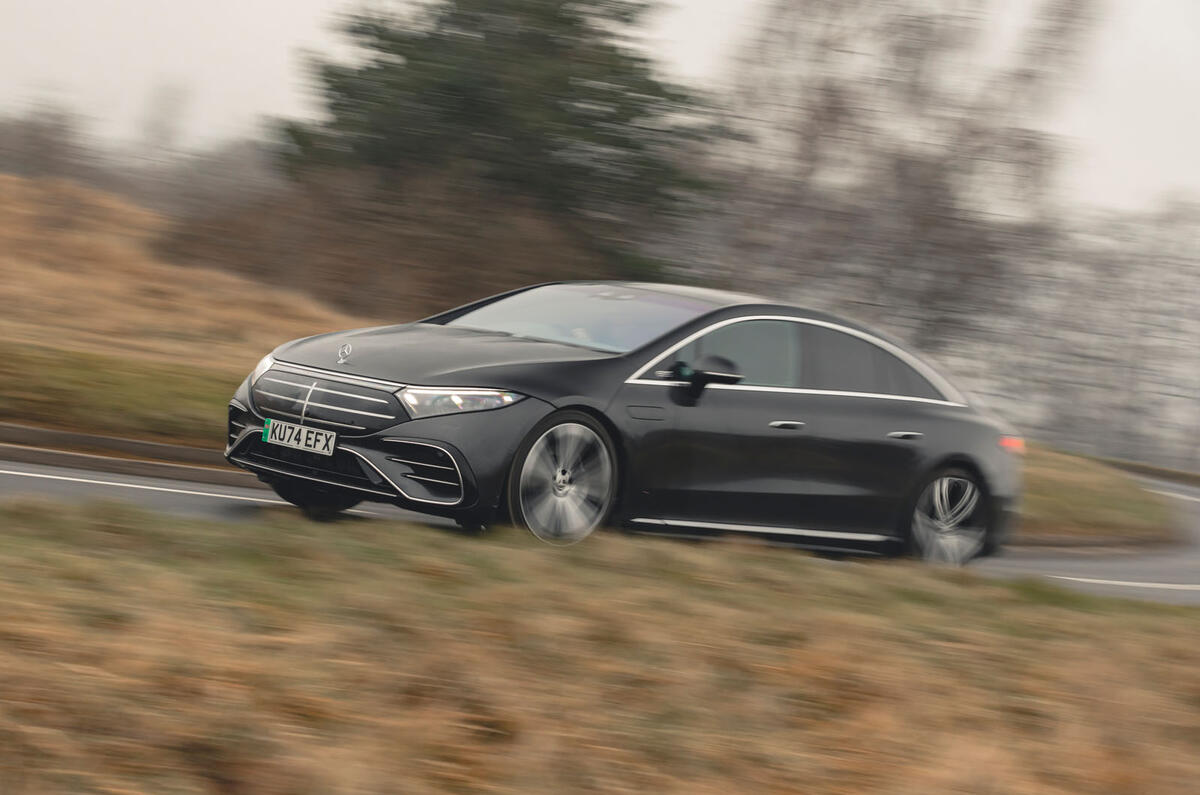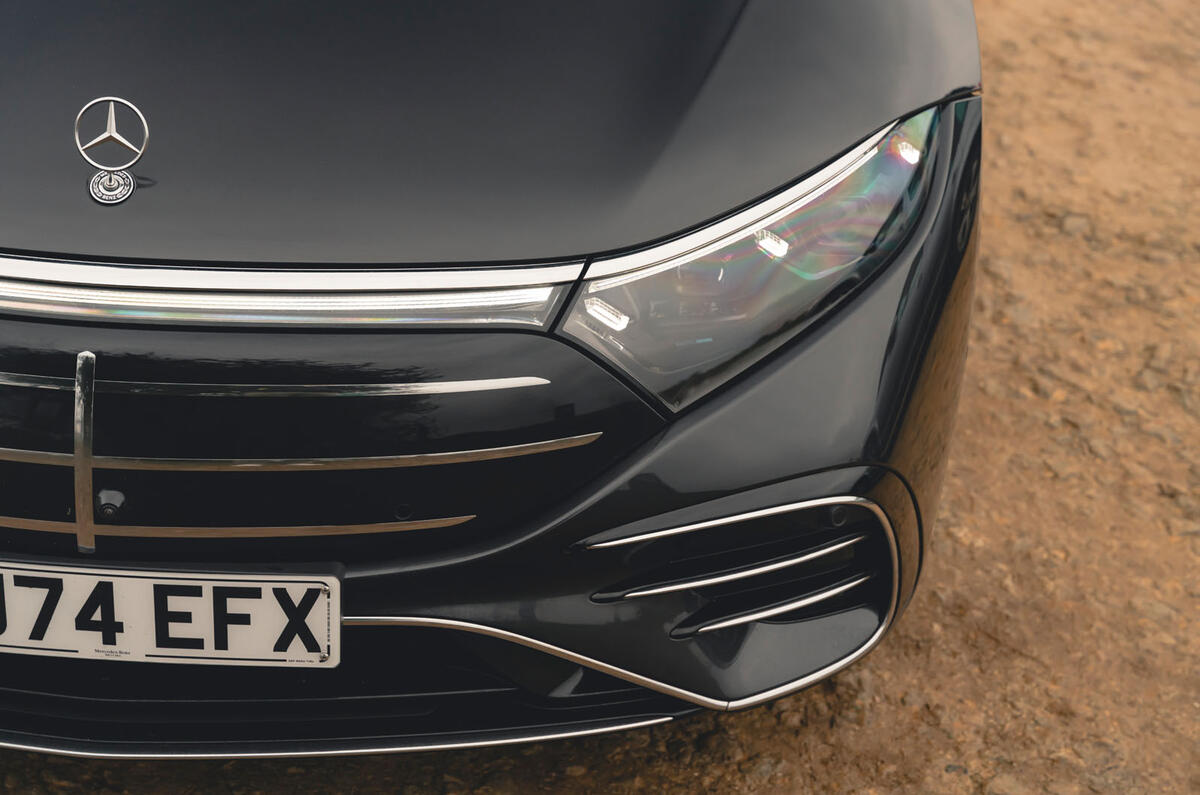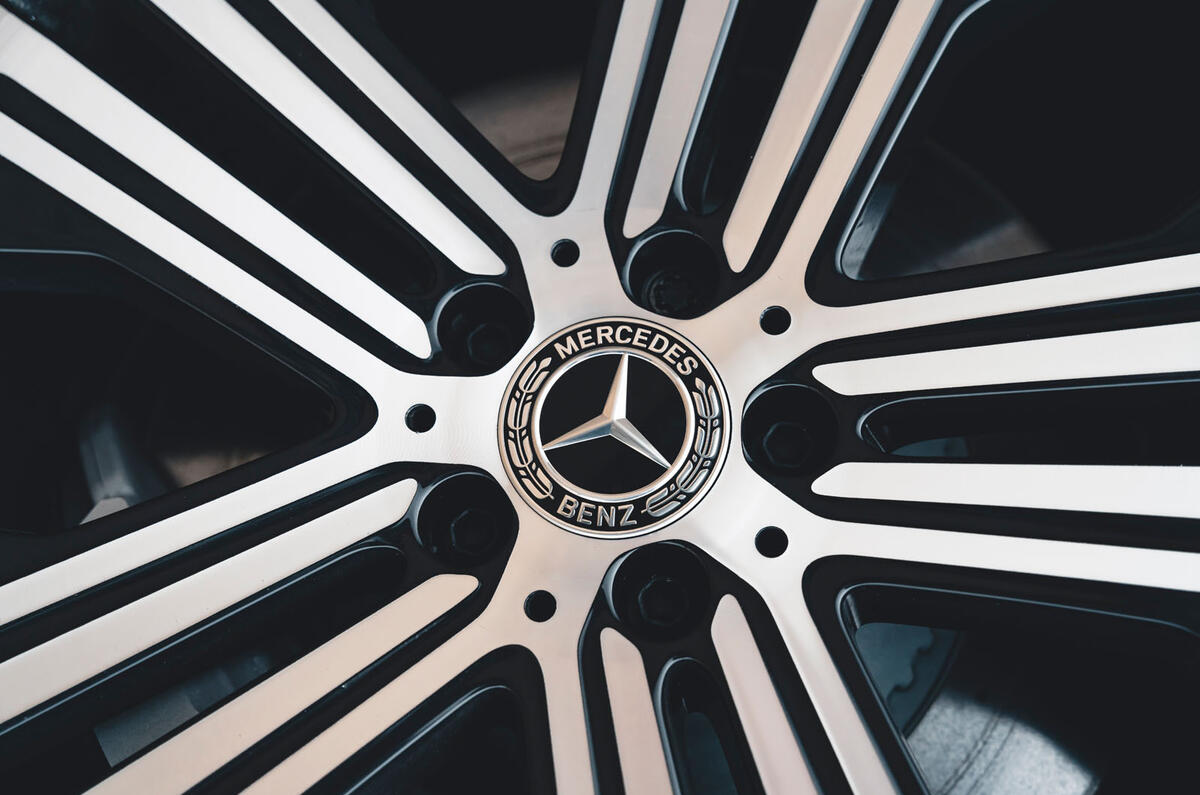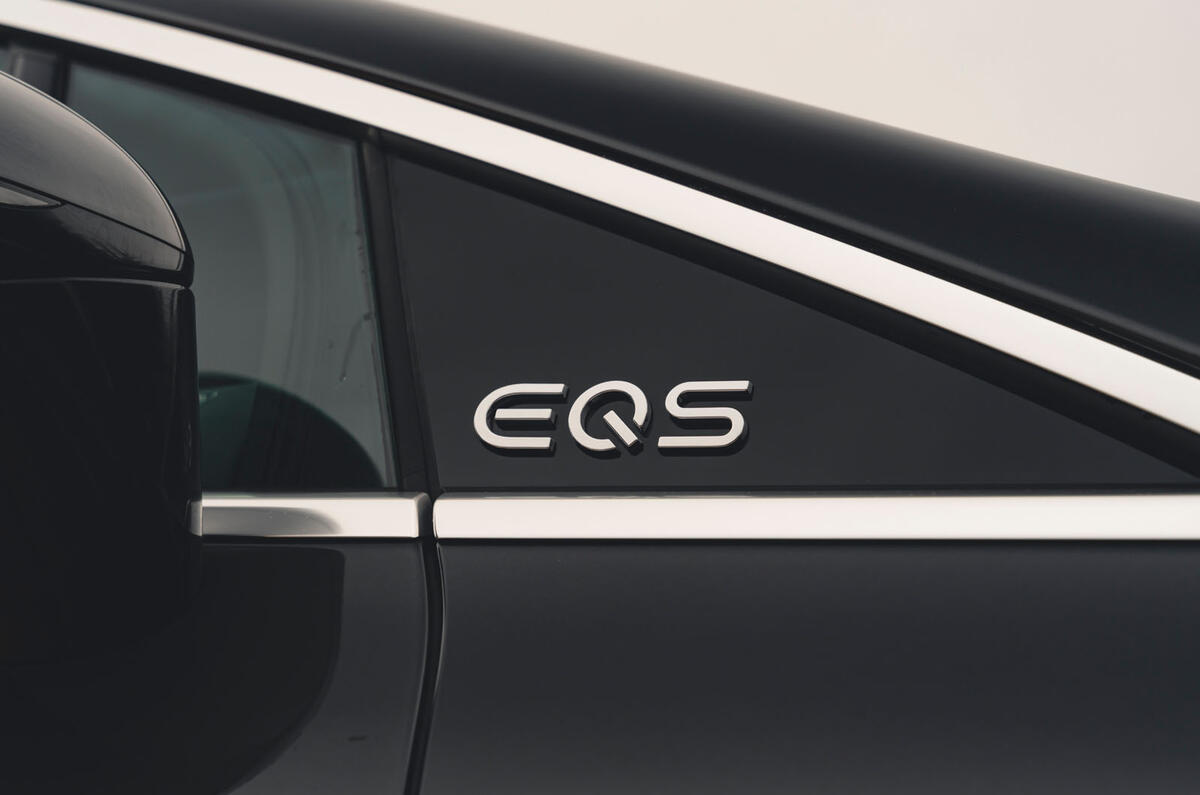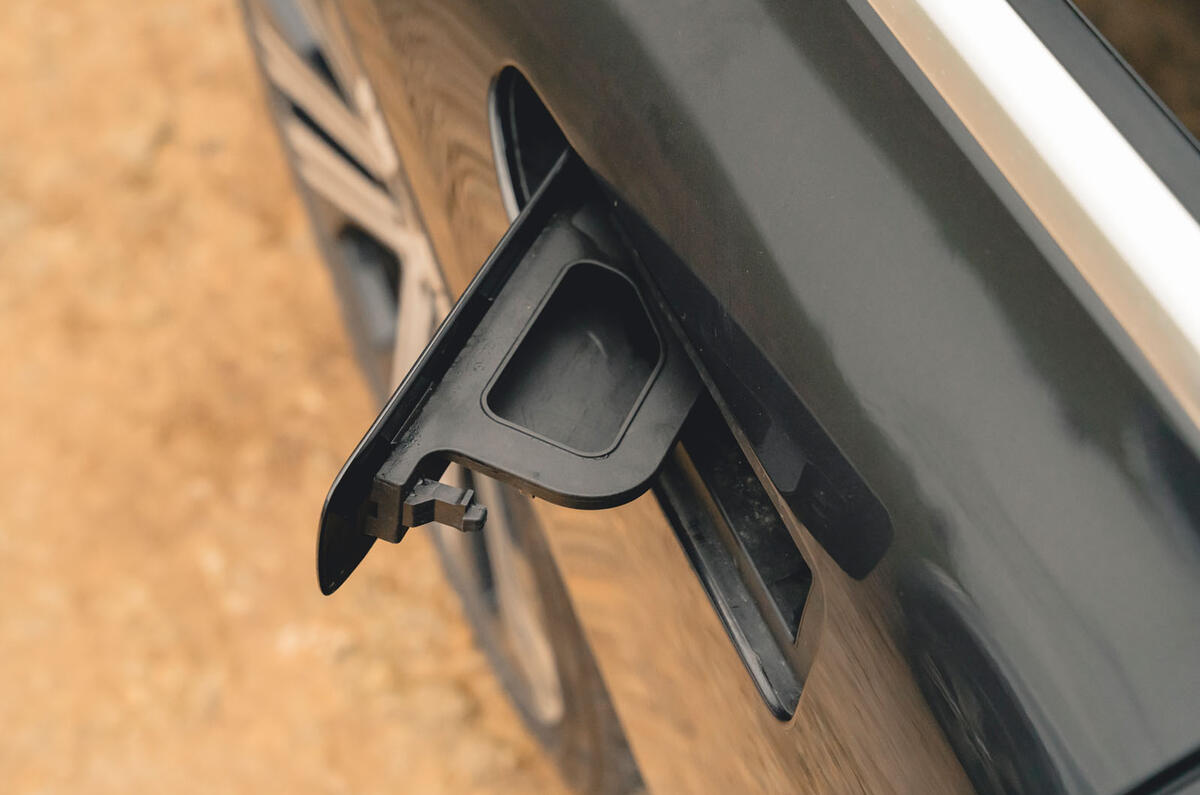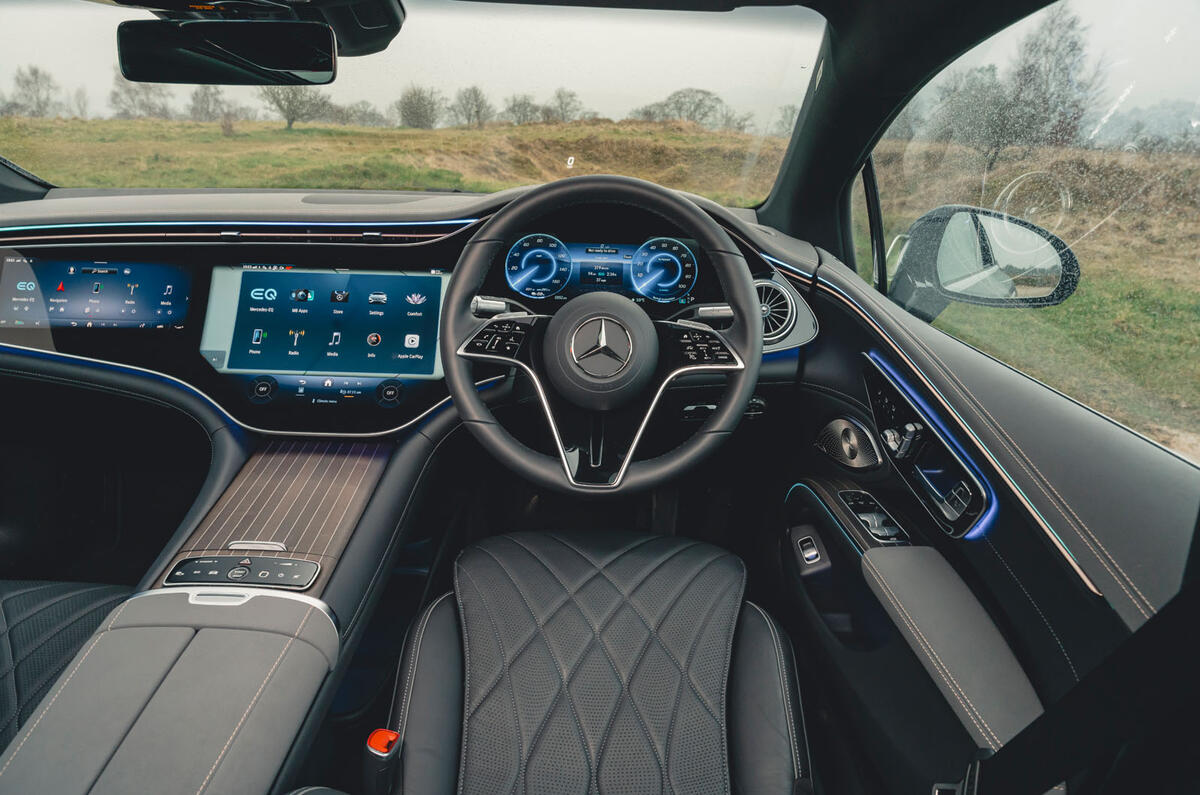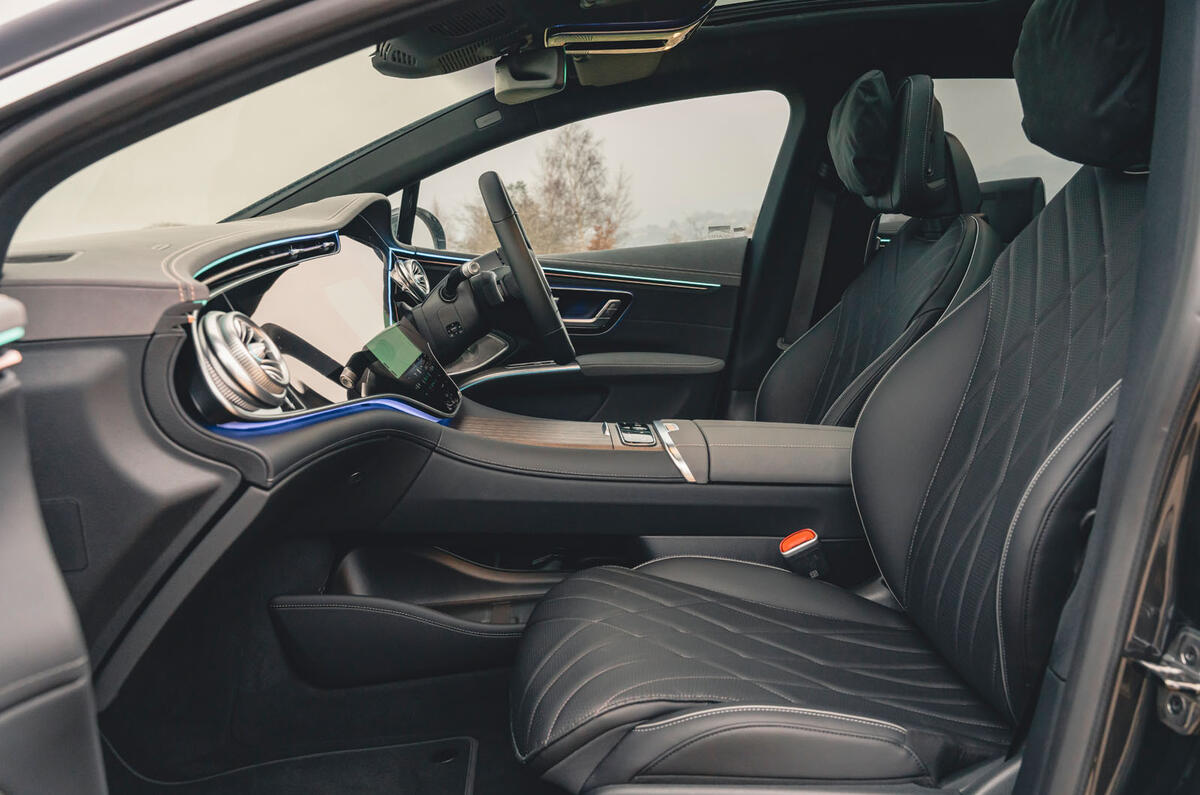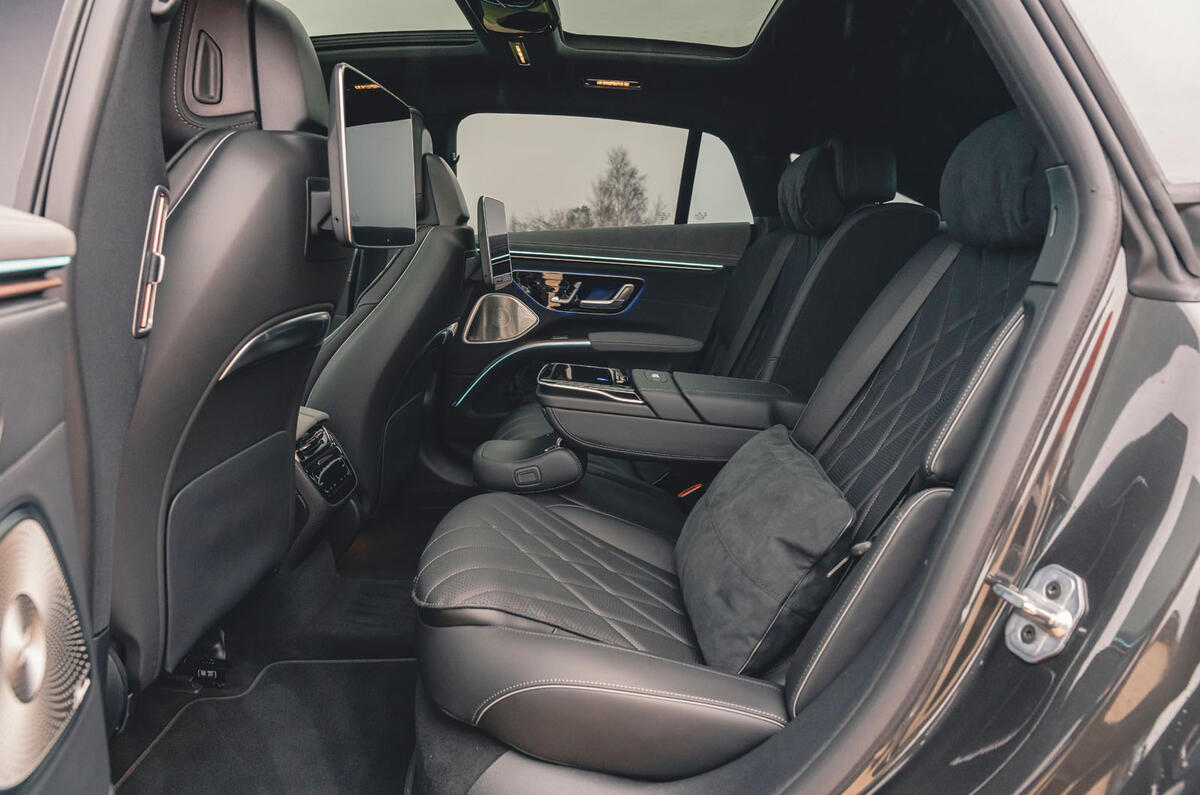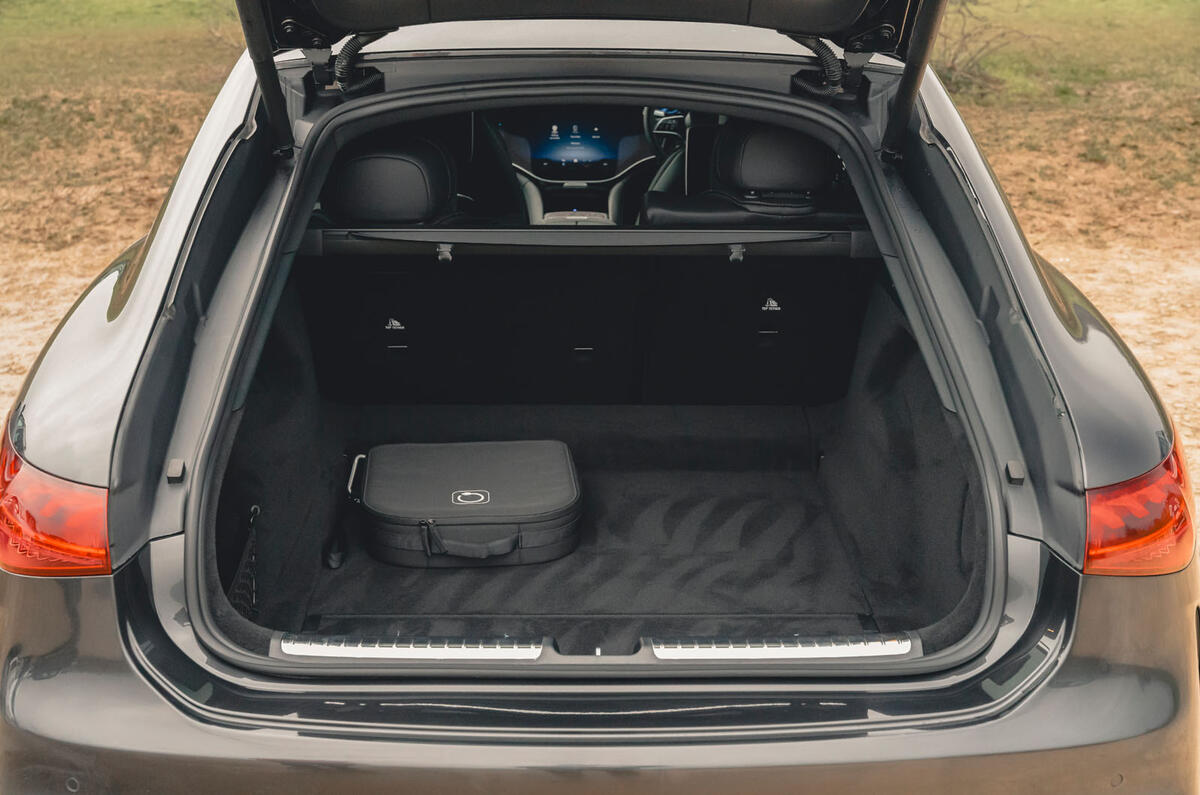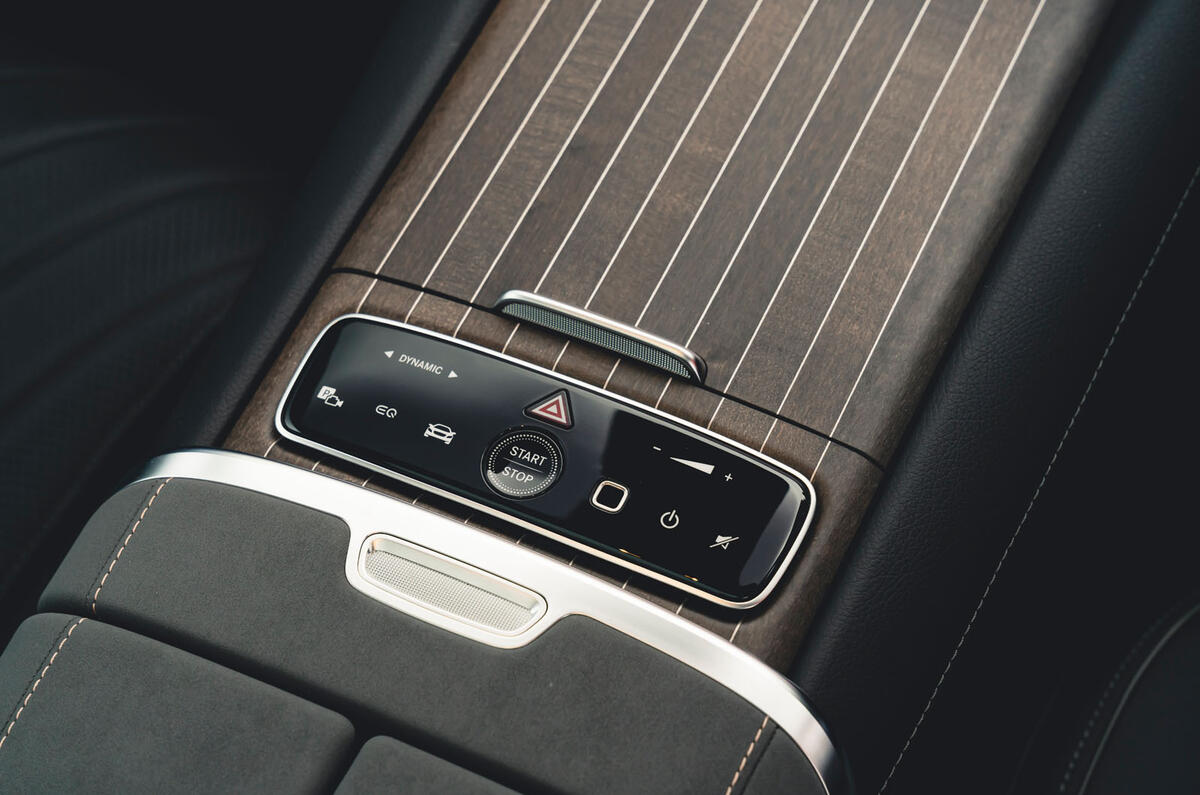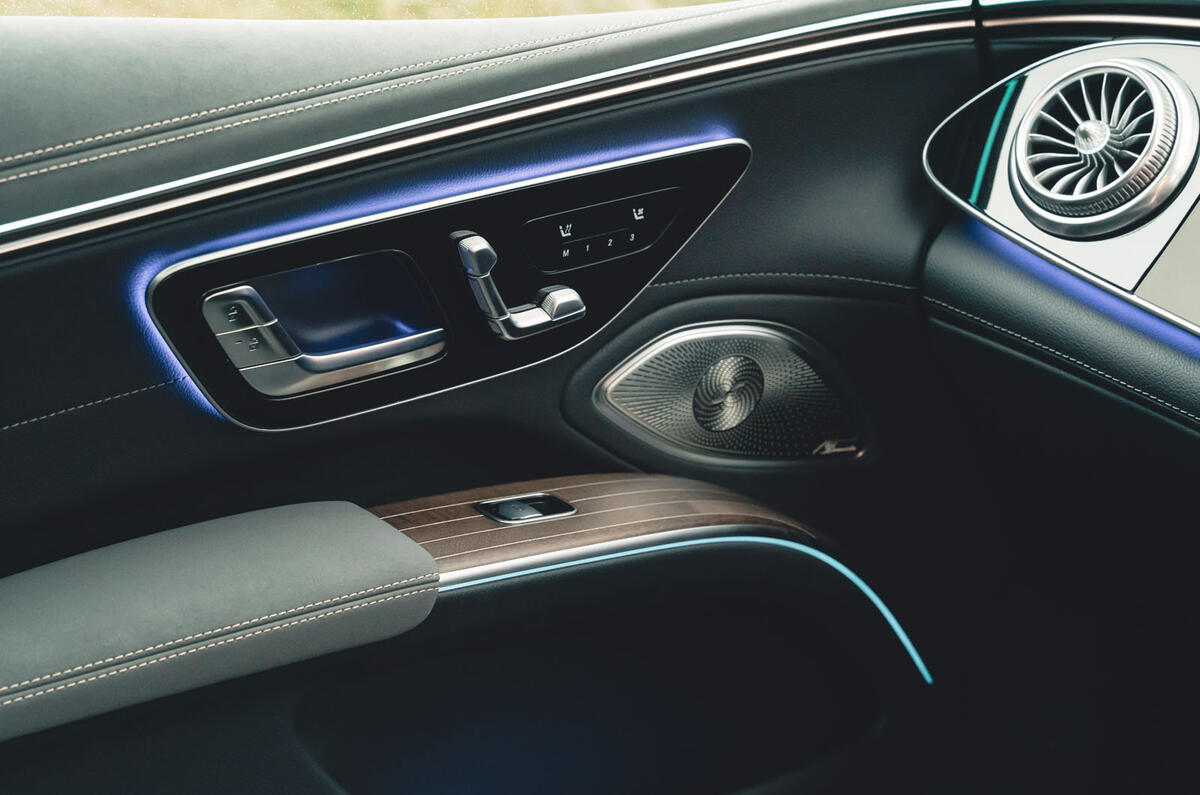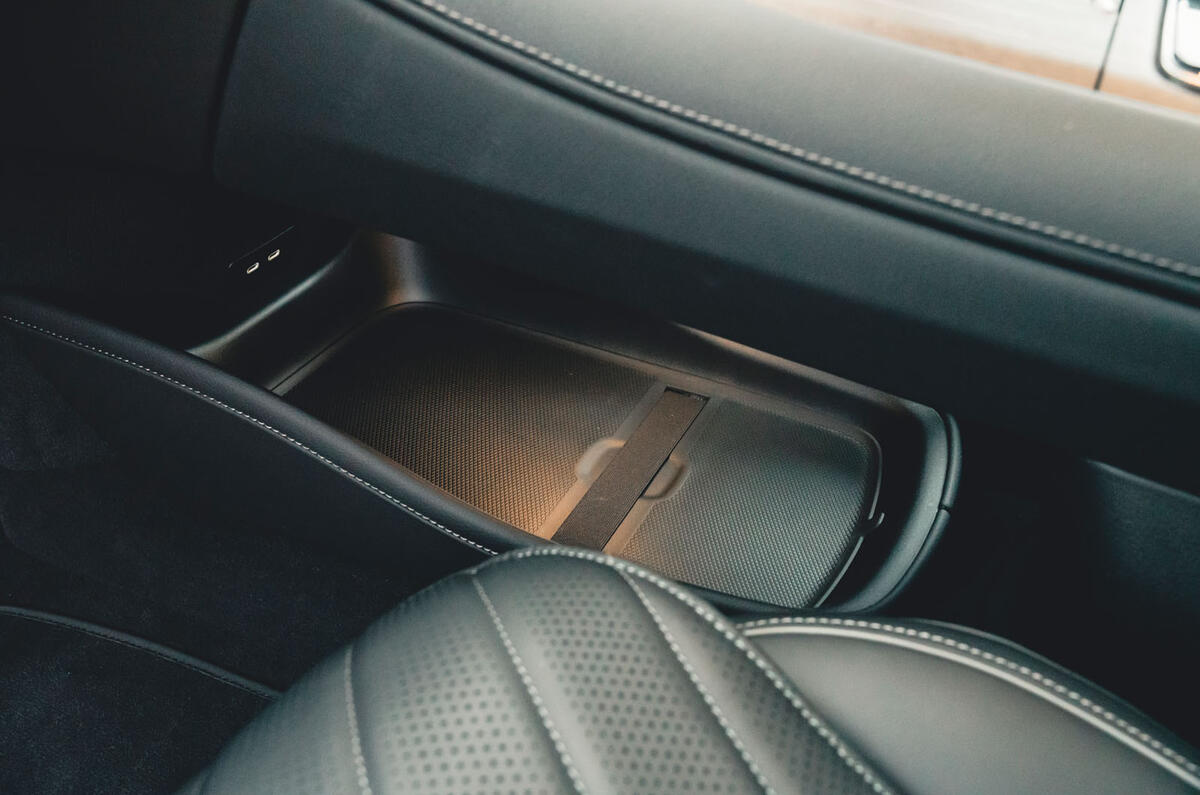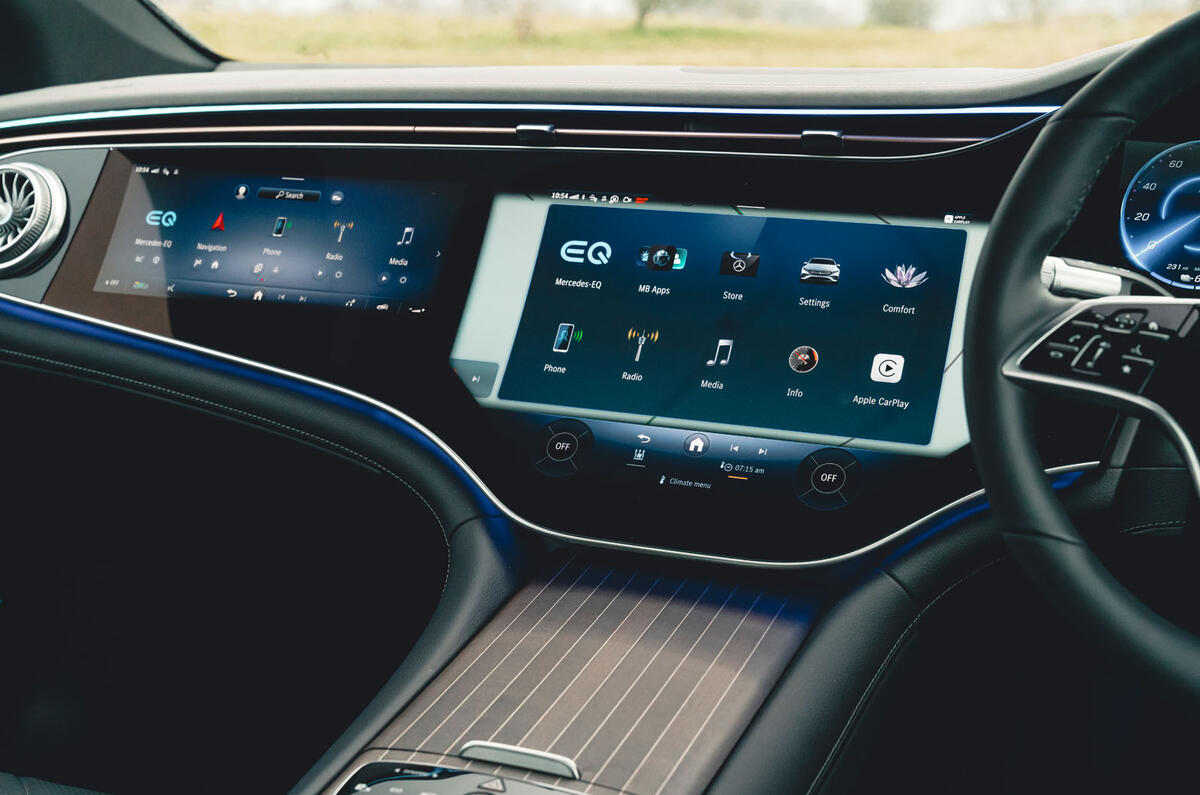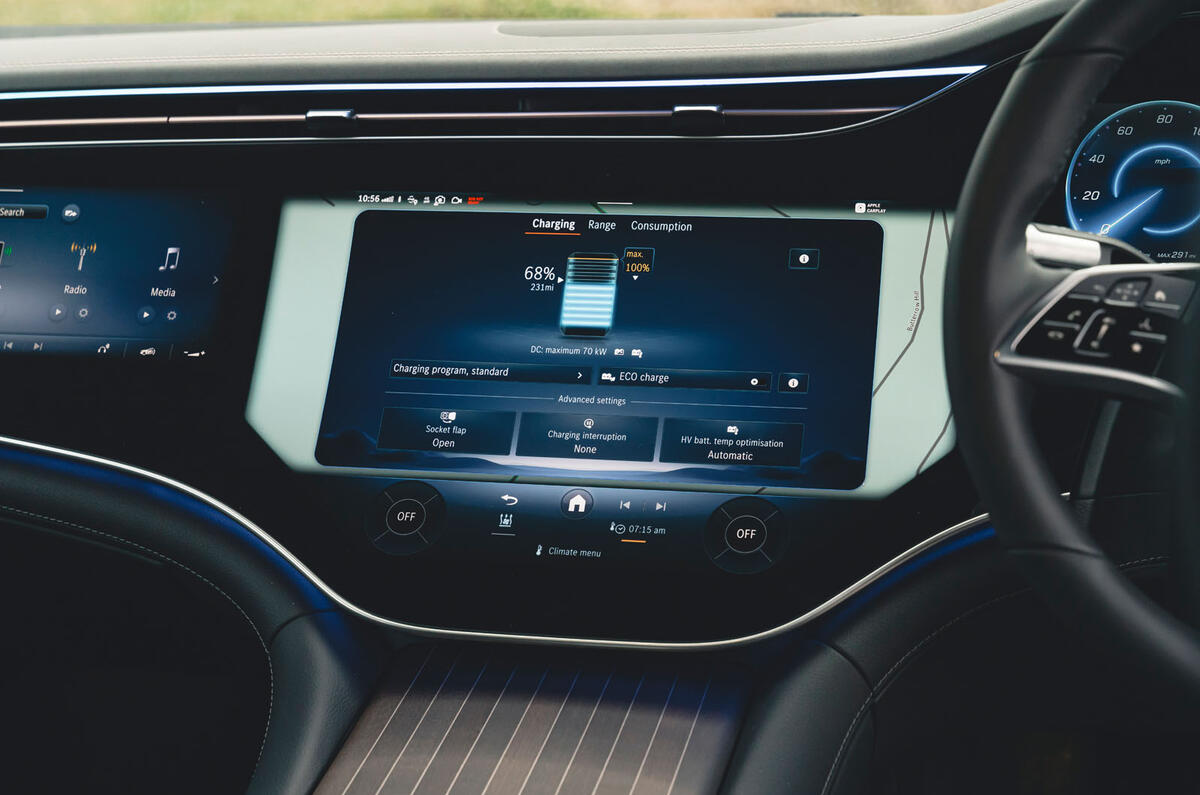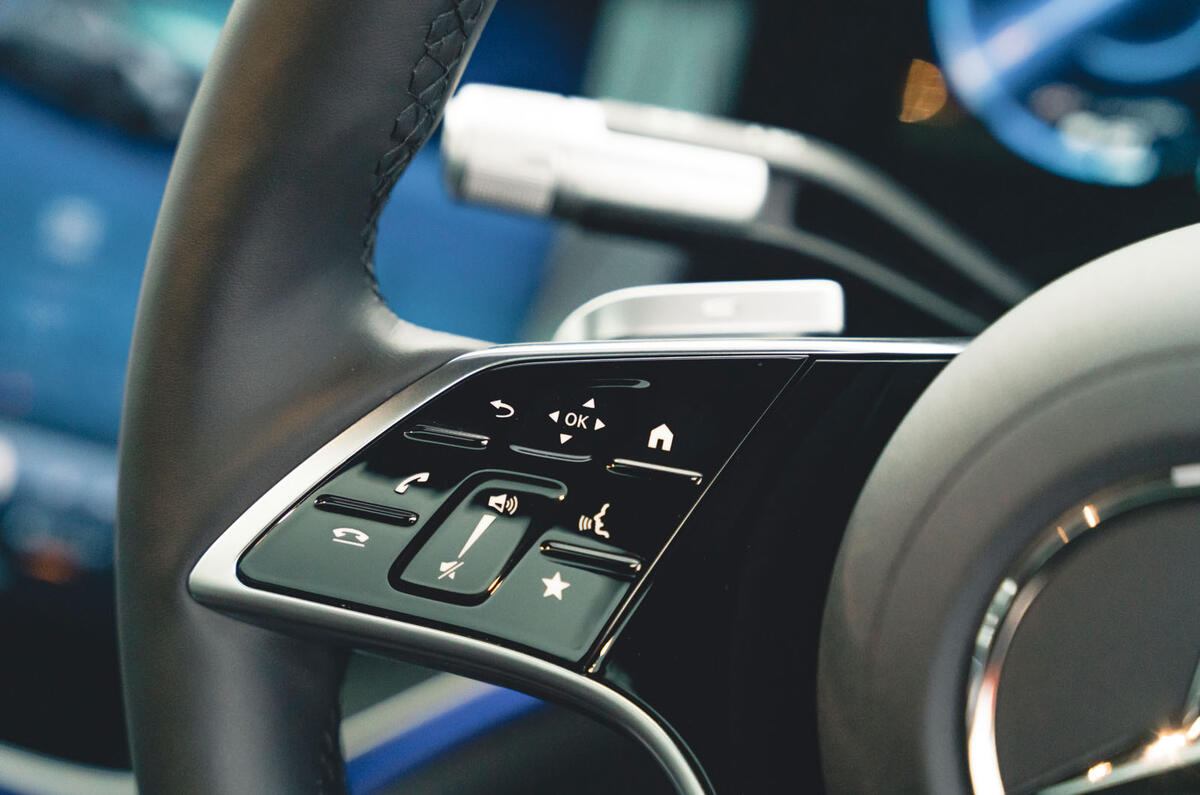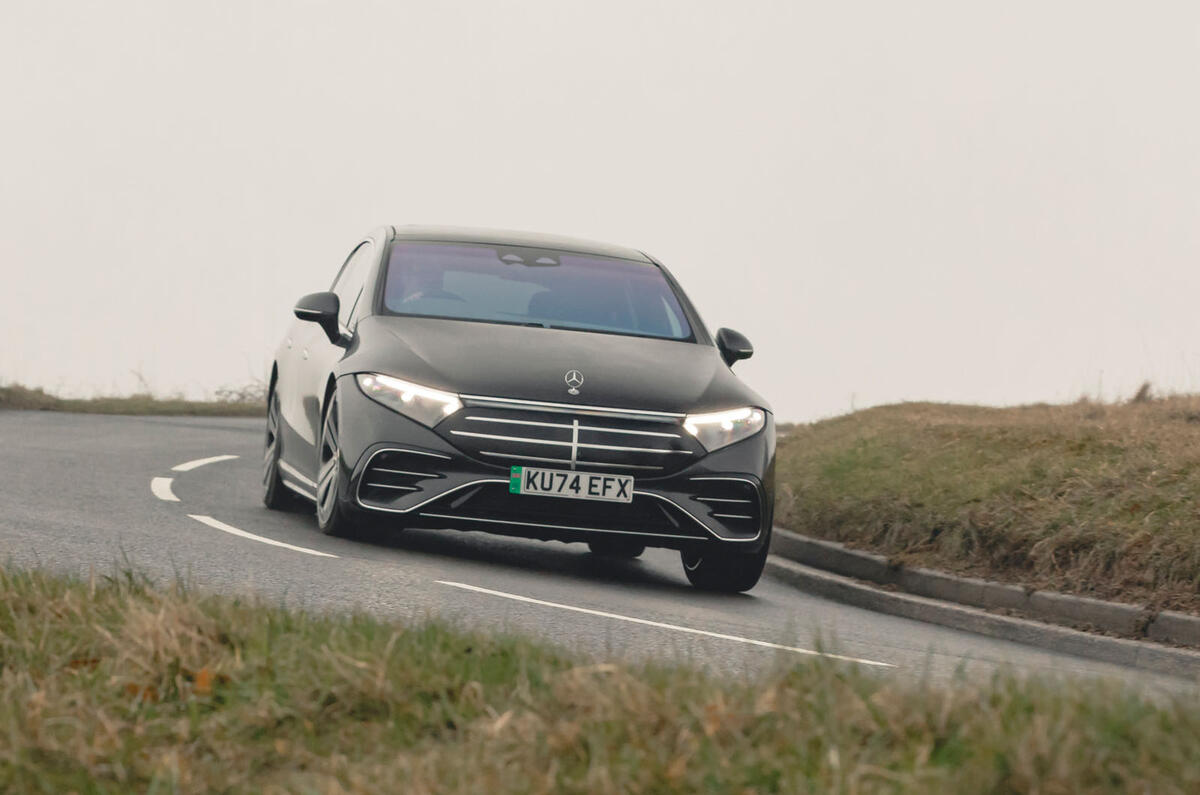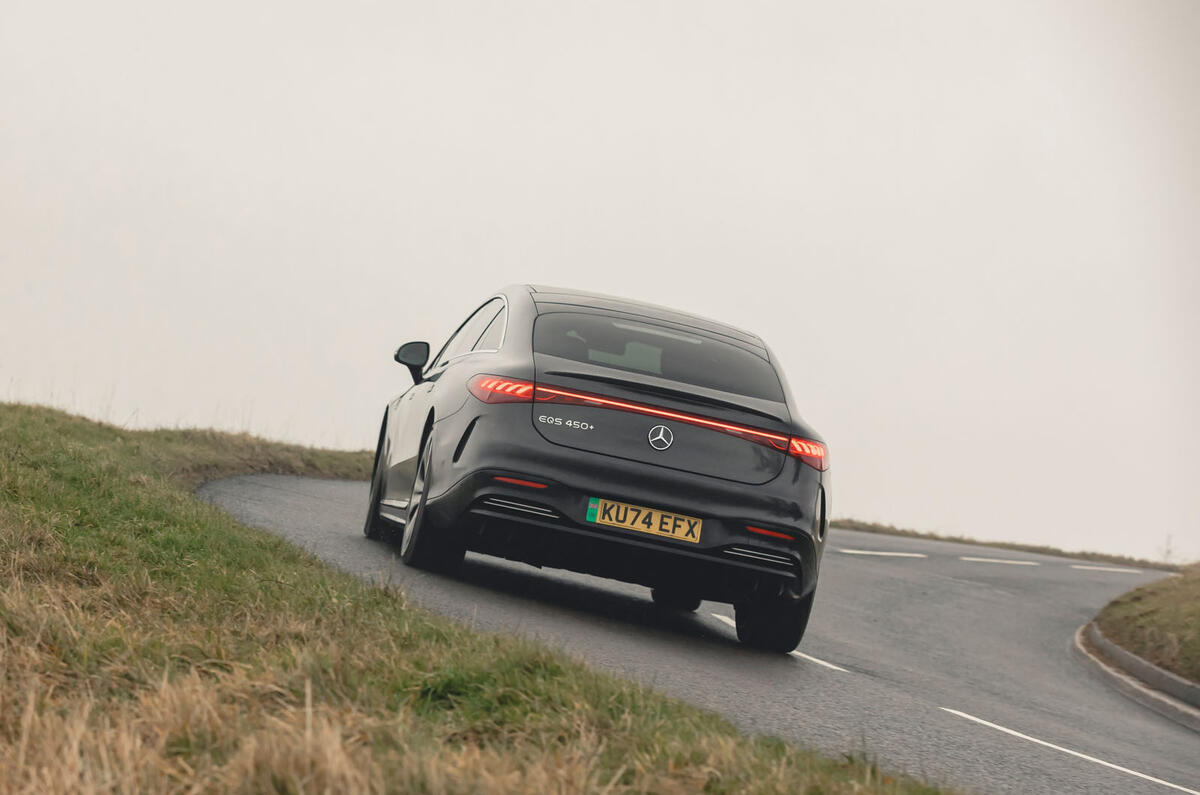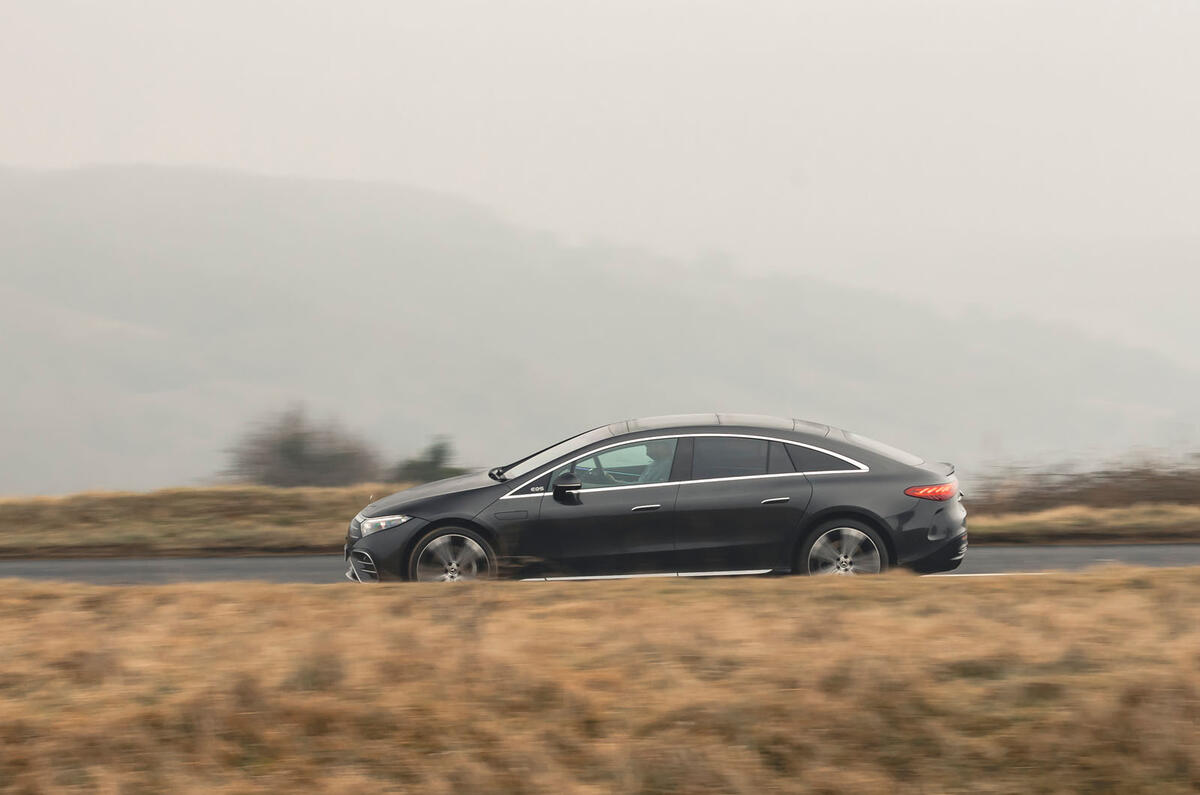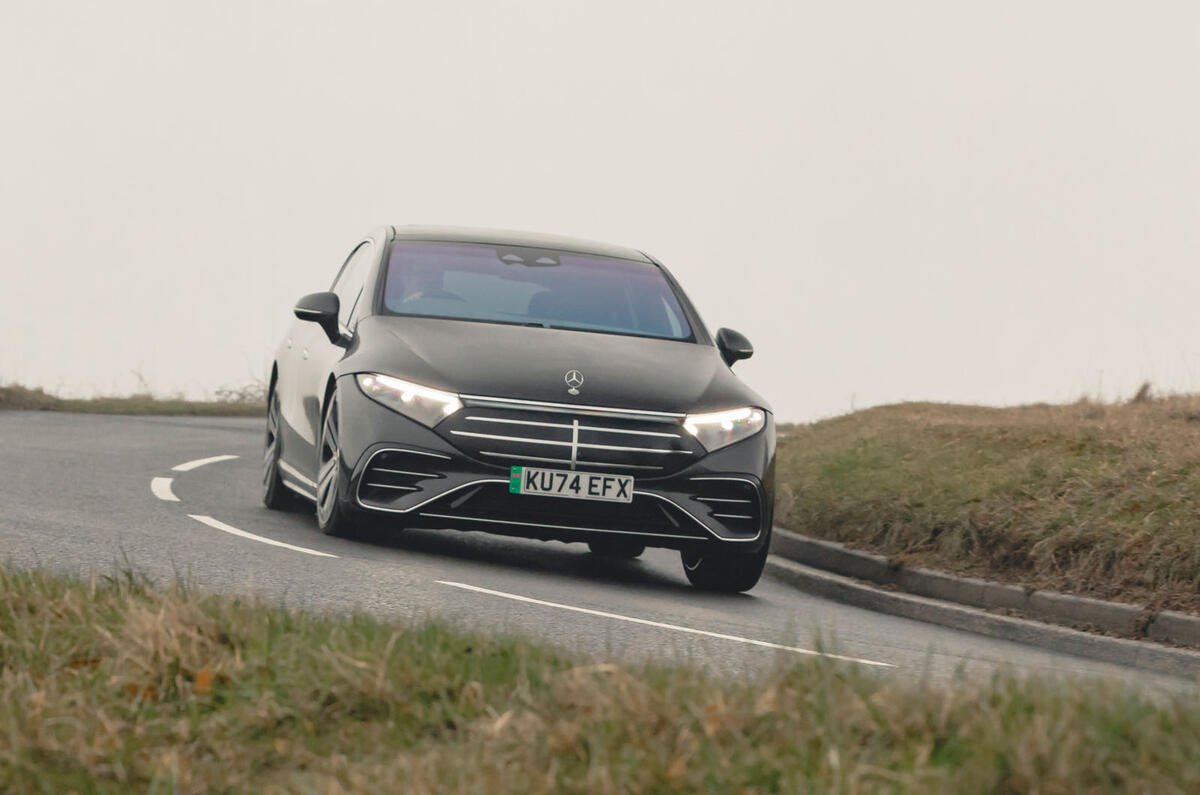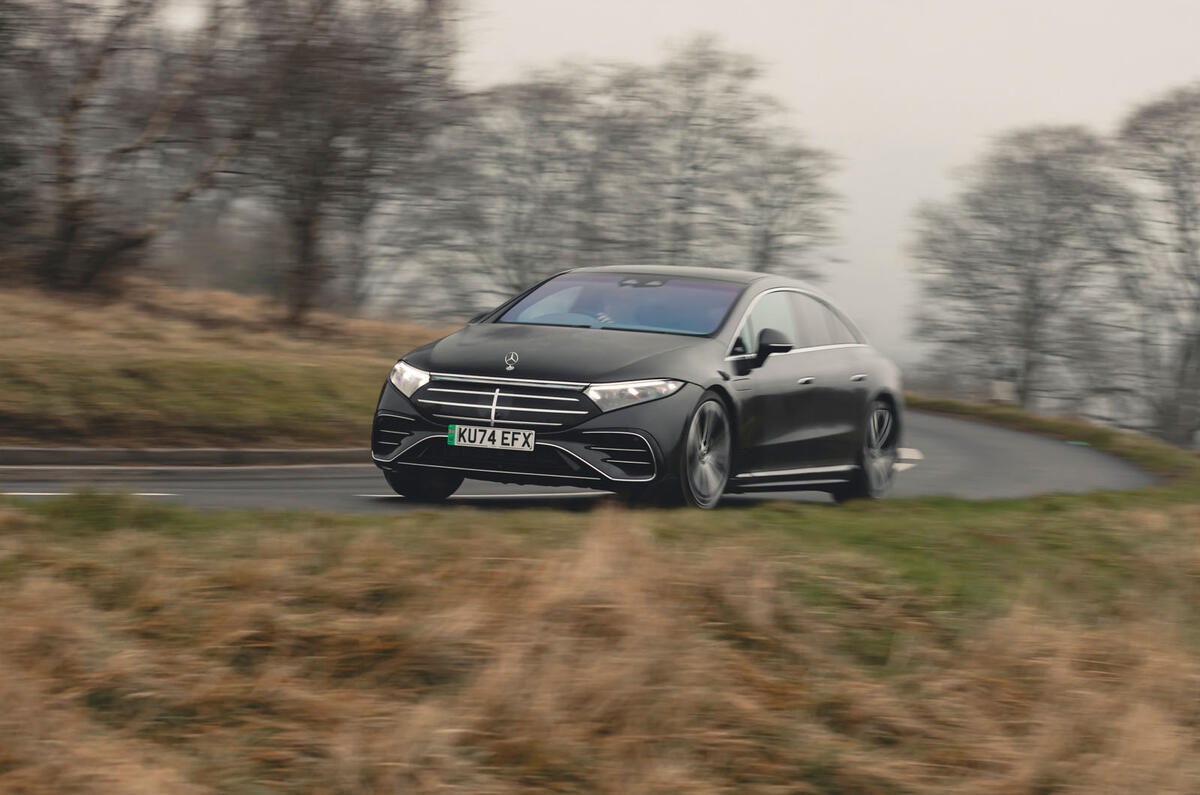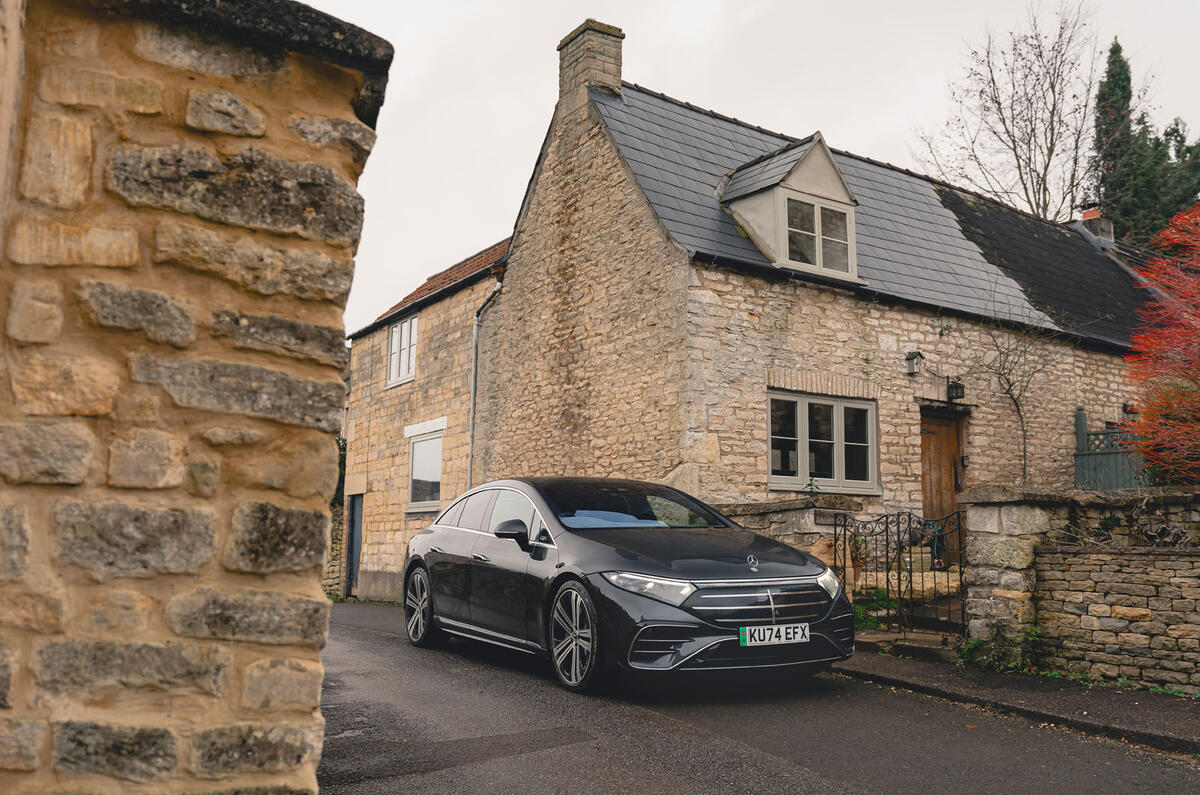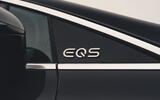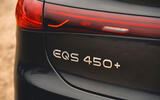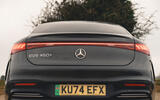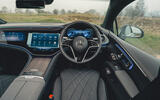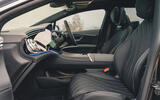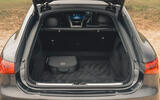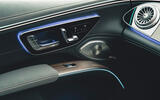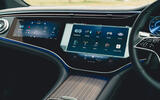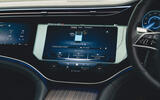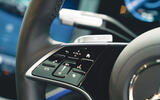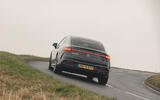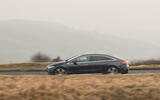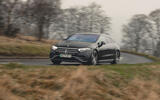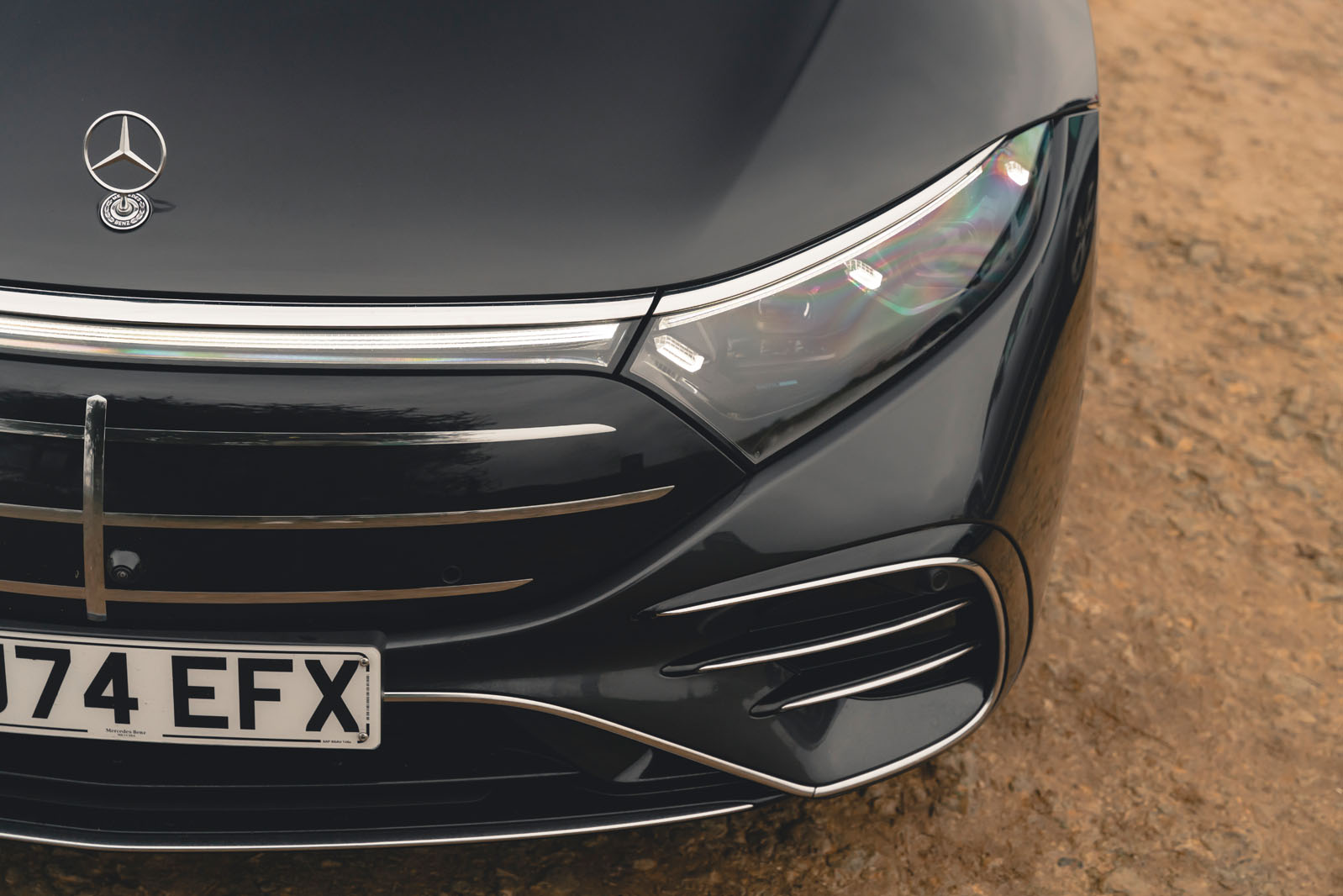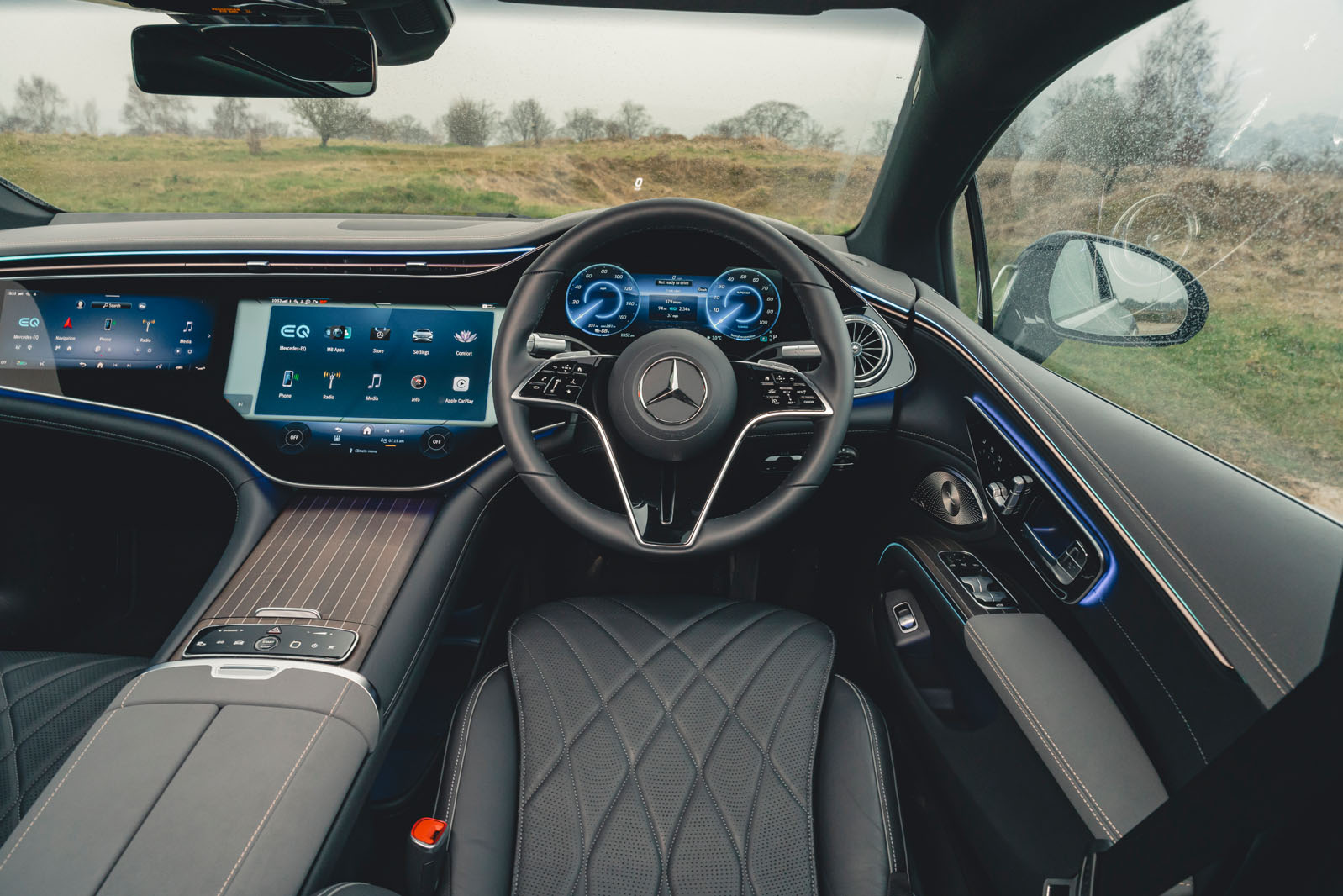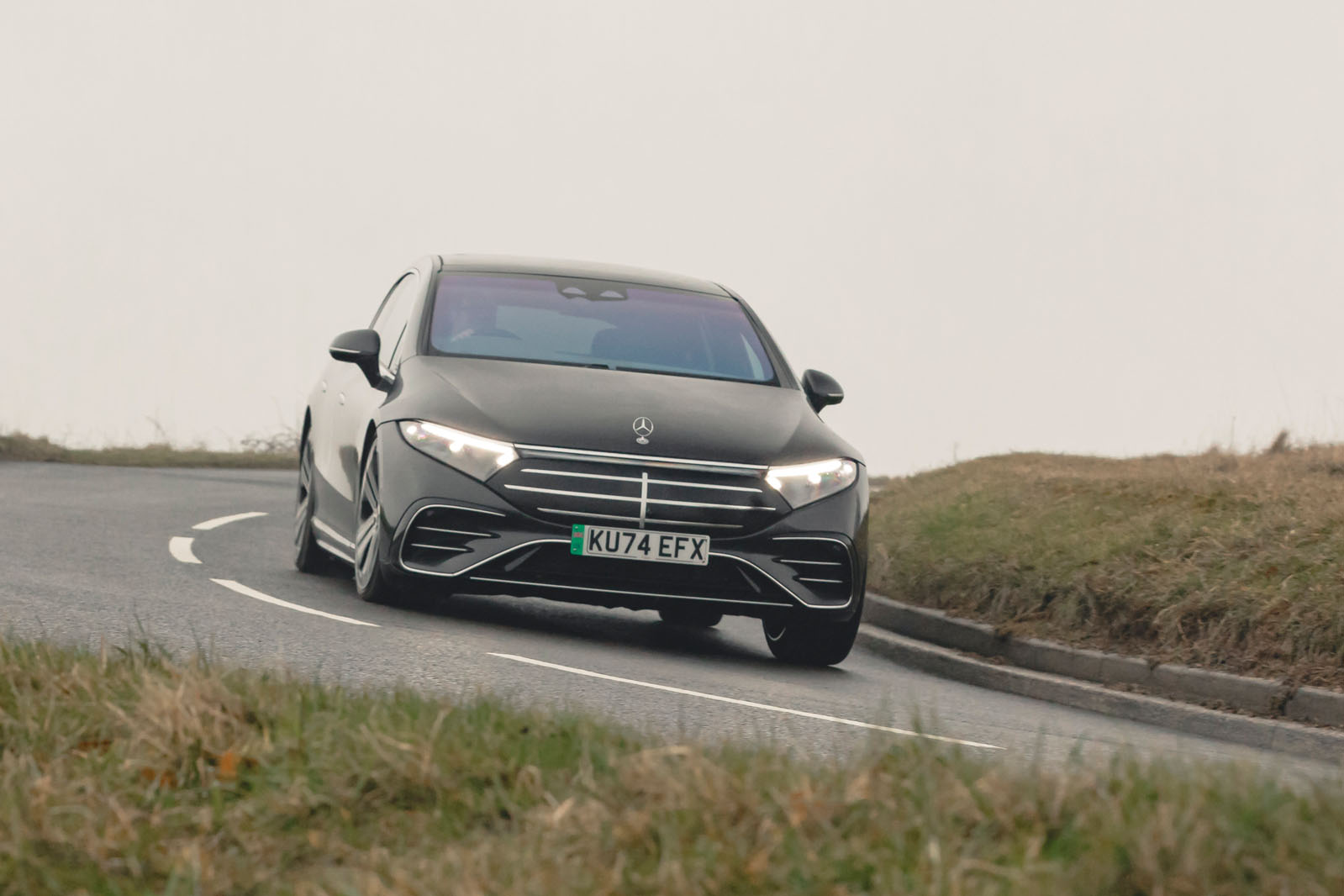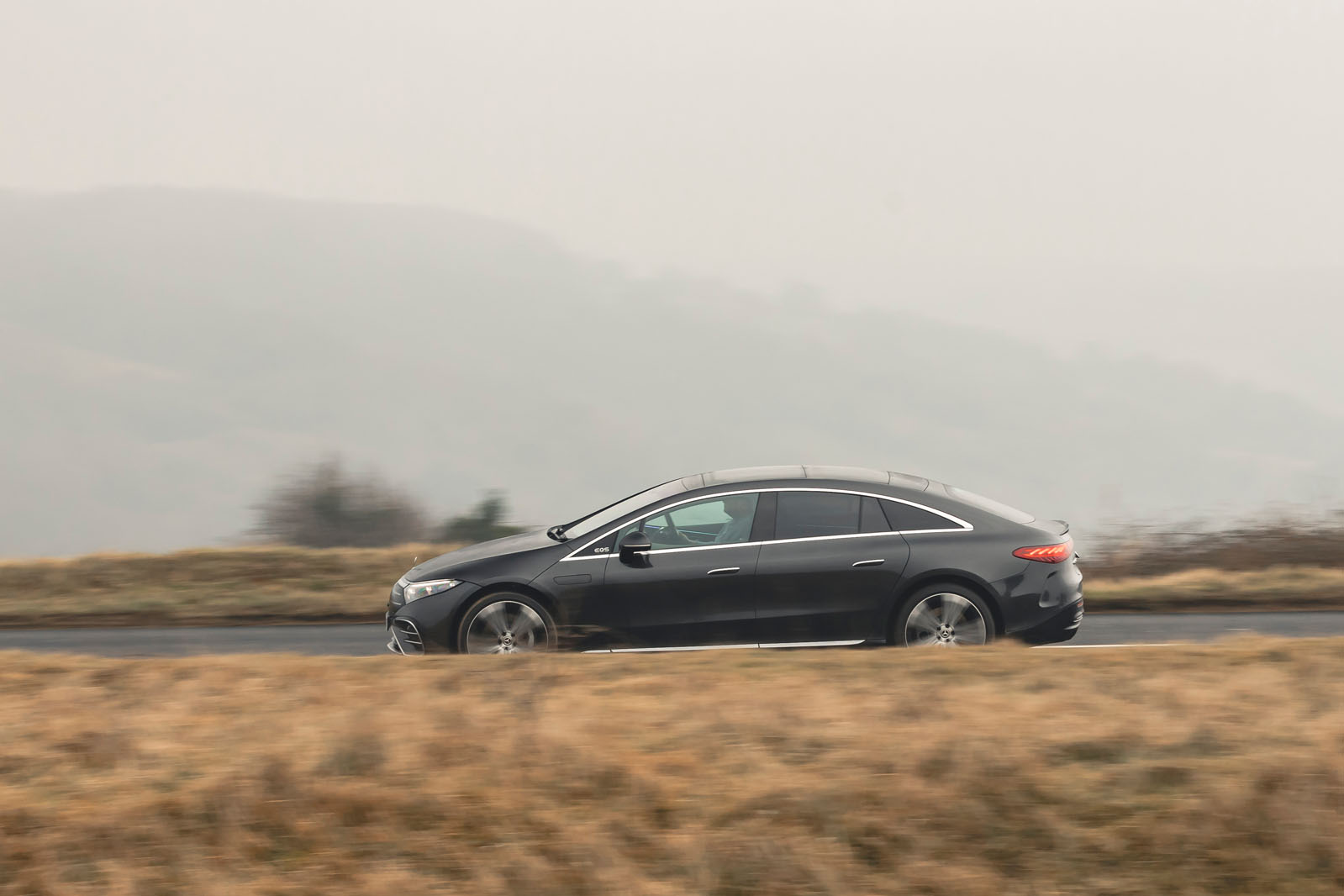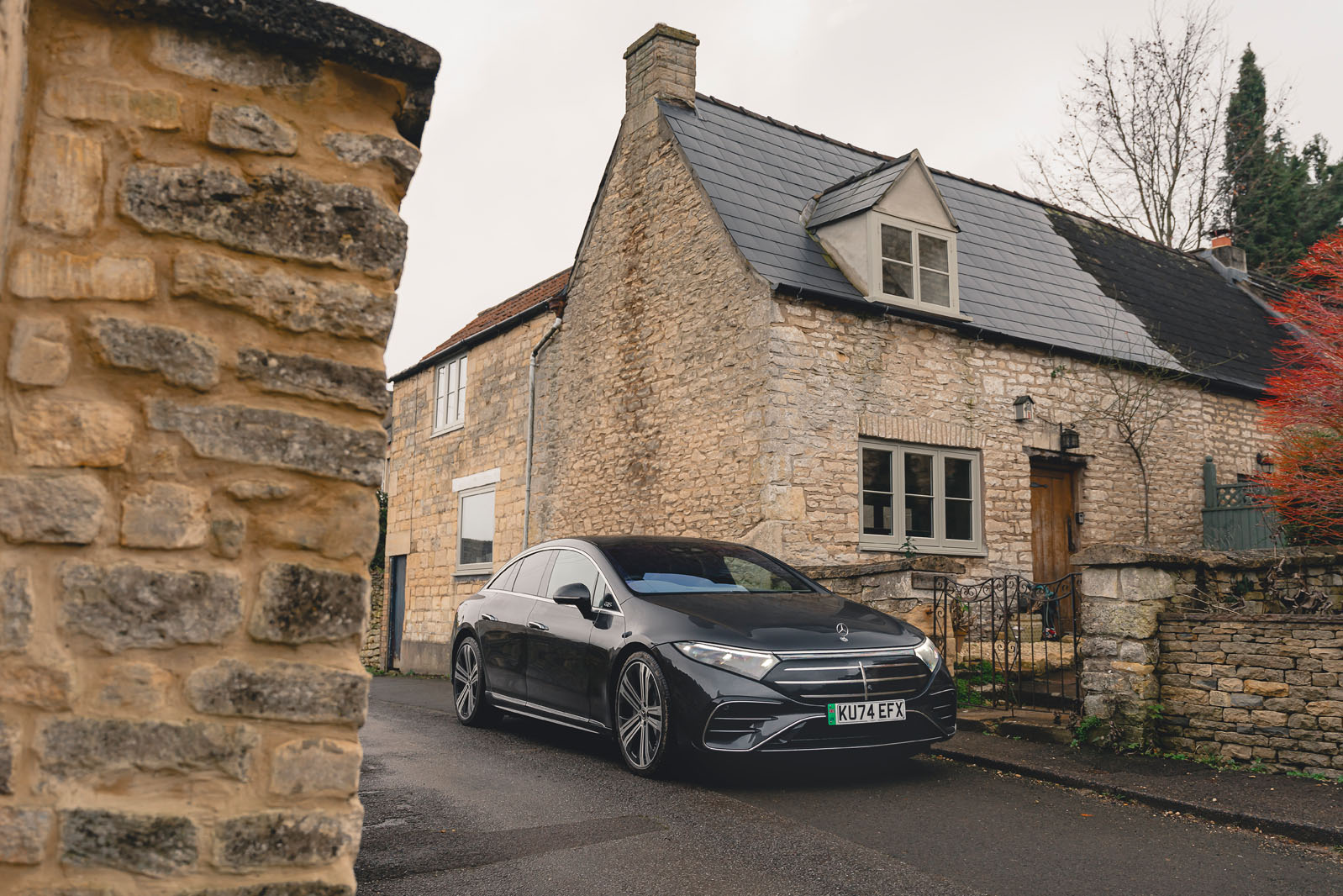There was plenty about the design of the EQS that, when the car first came along in 2021, made it seem like a tellingly direct riposte to the Tesla Model S – an EV that had been eating into S-Class sales in the US for several years.
But nothing did more so than Mercedes’ Hyperscreen infotainment system, which made it look as if the car’s entire fascia had been replaced by one gigantic touchscreen. Four years ago, of course, this was an optional feature, whereas now every EQS gets this system as standard. And, while you can decrease the brightness of the three display screens of which it is comprised, or turn at least two of them off entirely, its glare is certainly considerable when all are lit – and then exacerbated by that of the cabin’s ambient light features, which can pulse and glow in different colours when the right setting is selected.
It’s more than enough to mark this car out, for better or worse and in fully unapologetic terms, as a limousine for the digital age: a jilted lover’s letter, clearly, to all those Mercedes S-Class exiles running a Model S. The rest of the EQS’s cabin layout is more traditional, however, with a default four-seater passenger configuration and a big armrest console between the rear passengers that houses a removable tablet-style touchscreen remote for the car’s main multimedia system and can be folded away to create an additional third back seat.
In the front, the driving position offers plenty of leg and elbow room, though it’s tighter around your head, especially when getting in. The front seat and primary control layout are both very good, however; the former having abundant adjustment potential and all the expected heating and massage options.
In the back, Mercedes’ optional Rear Seat Comfort Plus package matches the comfort level of the front seats. The reclining rear seat on the passenger side, which has a seat cushion that extends by 50mm and a floor-mounted footrest, isn’t quite a ‘sleeping seat’ but would seem to offer at least some use for long-distance lounging. Unfortunately, Mercedes didn’t fit that option to our test car, whose back seats were certainly spacious, luxurious and comfortable but didn’t match the BMW i7 we tested in 2023 for first-class transatlantic passenger comfort (Mercedes does offer something comparable on its Maybach S-Class and GLS, and on the Maybach EQS SUV, it claims).
Boot space, however, is surprisingly good – with a liftback-style hatchback rear end granting very easy access to a particularly long loading volume in excess of 600 litres. If you were to undertake a long touring trip with plenty of luggage, the EQS would certainly be well prepared in that respect.
Multimedia - 4.5 stars
As imposing as it is, the EQS’s Hyperscreen multimedia system isn’t difficult to get on with. You can use the ‘D-pad’ controller on the left-hand spoke of the steering wheel as a cursor controller to navigate it if you prefer that to direct touchscreen input; there are physical menu shortcuts close to your left hand, to jump between important menu screens (ADAS, charging, parking cameras etc); and Mercedes provides an excellent top-level ‘zero layer’ navigation that’s only ever one touch away.
That the car’s ventilation controls are screen-based is a little irksome, but they are permanently displayed, accessible and not fiddly. There’s also a permanent toggle button to turn off the speed alarm. The navigation system is easy to program, via your voice or fingertip input, and also easy to follow, with good support to find charging stations.
In the back row, meanwhile, our test car came with the MBUX rear-seat entertainment system, which grafts on a pair of 11.6in displays to the front seatbacks, as well as wireless headphones. Between these and the removable tablet remote, you can assume command of the car’s main multimedia system from the back row, or select and stream your own entertainment online, with options for HDMI input from external devices as well.



